Every state has its own personality—its own foods, landmarks, and yes, even creatures you probably don’t want to bump into. Some are big and obvious, like bears or alligators. Others are much smaller but still pack a punch. And while most wildlife wants nothing to do with humans, it’s still a good idea to know what’s out there.
What’s considered “dangerous” can look very different depending on where you are. In some states, it’s something that bites. In others, it’s something that charges. You might even be surprised by what tops the list in your area. One thing’s for sure: nature doesn’t mess around.
Alabama – Cottonmouth Snake
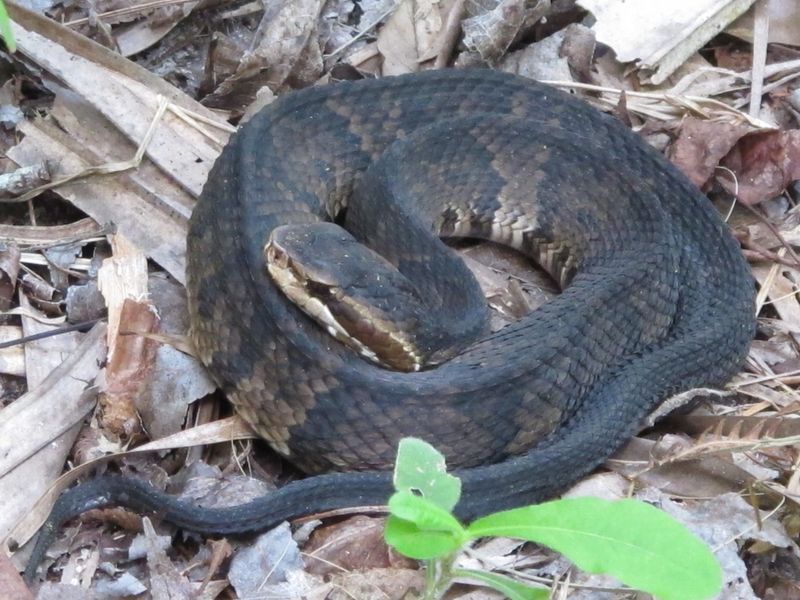
The cottonmouth snake, also known as the water moccasin, is a venomous snake found in Alabama’s wetlands. These snakes are known for their aggressive behavior and potent venom. While bites are rarely fatal, they cause significant pain and tissue damage.
Inhabiting swamps and waterways, cottonmouths are often mistaken for non-venomous water snakes. Their distinctive white mouths, shown when threatened, give them their name. If encountered, it’s wise to back away slowly and avoid provoking the snake to prevent an attack.
Always be cautious when exploring wetland areas in Alabama. Watch your step!
Alaska – Grizzly Bear
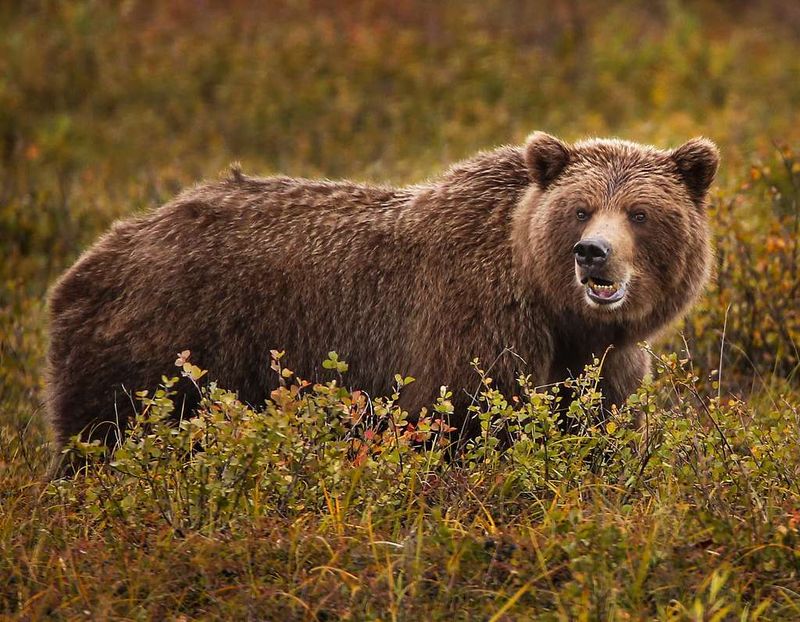
In the vast wilderness of Alaska, the grizzly bear reigns as one of the most formidable animals. These bears, with their massive size and strength, command respect and caution. Although attacks on humans are rare, they can be deadly if a bear feels threatened.
Grizzlies are omnivorous, feeding on fish, plants, and small mammals. They are most active in spring and summer when food is plentiful. When hiking in bear country, it’s crucial to make noise, travel in groups, and carry bear spray.
Always respect their space and never approach a bear, even if it seems indifferent to your presence.
Arizona – Gila Monster
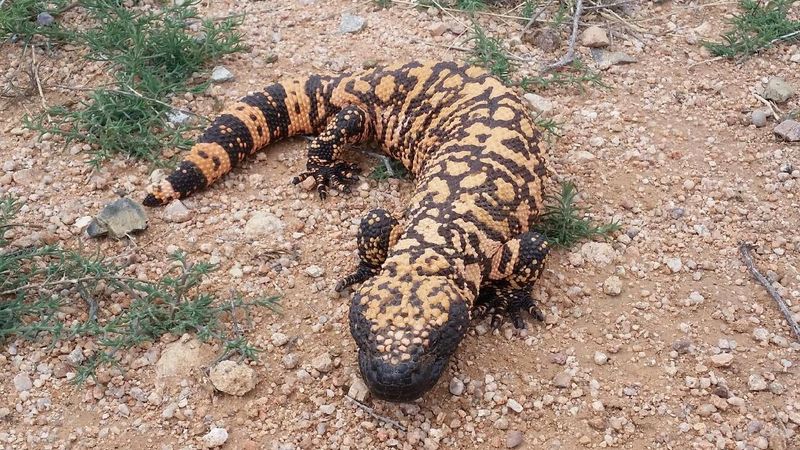
The Gila monster, one of the few venomous lizards, calls the deserts of Arizona home. Known for their striking black and orange scales, these creatures are slow-moving but pack a powerful bite.
While not aggressive, the Gila monster will defend itself if threatened. Its venomous bite can cause severe pain and swelling, making it a creature to admire from a distance. They primarily feed on bird eggs and small mammals.
In Arizona, the Gila monster is protected by law, so it’s illegal to harm or capture them. Appreciate their beauty from afar and respect their habitat.
Arkansas – American Alligator
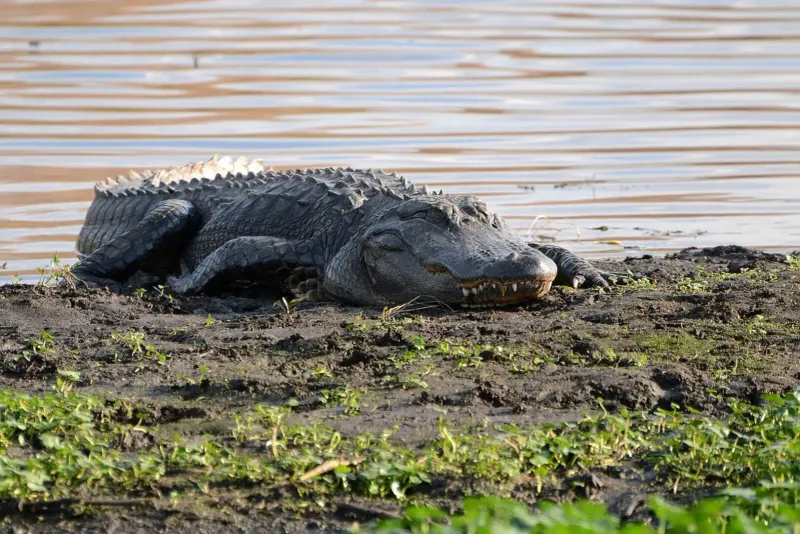
In the waterways of Arkansas, the American alligator lurks, a prehistoric predator with a powerful bite. These reptiles can grow over ten feet long and weigh hundreds of pounds. Despite their fearsome appearance, they generally avoid humans.
Alligators are opportunistic feeders, hunting fish, birds, and small mammals. Attacks on humans are rare but can be severe. It’s crucial to keep a safe distance and never feed or provoke them.
When enjoying Arkansas’s natural waterways, stay alert and respectful of these ancient creatures. They play a vital role in their ecosystem, keeping it balanced.
California – Mountain Lion

The mountain lion, or cougar, is a top predator in California’s diverse ecosystems. These solitary cats are elusive and generally avoid humans, but encounters can be dangerous.
Mountain lions hunt deer and smaller animals, using stealth and strength. If you encounter one, always appear larger, make noise, and avoid turning your back. Attacks on humans are rare but potentially deadly.
Respect their territory by securing food and trash while camping and hiking. Understanding their habits can help you coexist peacefully with these majestic creatures as you explore California’s wild areas.
Colorado – Black Widow Spider
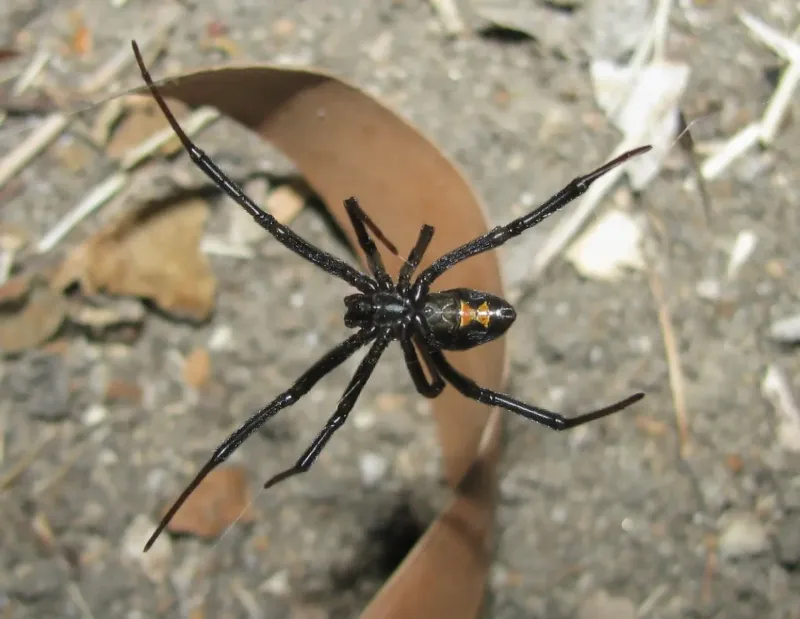
The black widow spider, notorious for its venomous bite, can be found in Colorado’s more temperate areas. Recognizable by its glossy black body and red hourglass marking, this spider prefers dark, undisturbed places.
While their venom is potent, bites are rarely fatal to humans. Symptoms include pain, muscle cramps, and nausea. Medical attention is advised if bitten, especially for children and the elderly.
In Colorado, it’s wise to be cautious when reaching into dark corners or unused outdoor items where these spiders may reside. Regularly check and clear areas to minimize risk.
Connecticut – Eastern Timber Rattlesnake

The eastern timber rattlesnake, found in Connecticut, is a venomous species that demands respect. Preferring rocky hillsides and forests, these snakes are essential in controlling rodent populations.
Although bites are rare, they can cause severe pain and require immediate medical attention. The snake’s distinctive rattle serves as a warning to potential threats. If encountered, maintain a safe distance and back away slowly.
In Connecticut, timber rattlesnakes are protected by law, highlighting their importance to the ecosystem. Education and awareness can help ensure safe coexistence with these remarkable reptiles.
Delaware – Red Fox
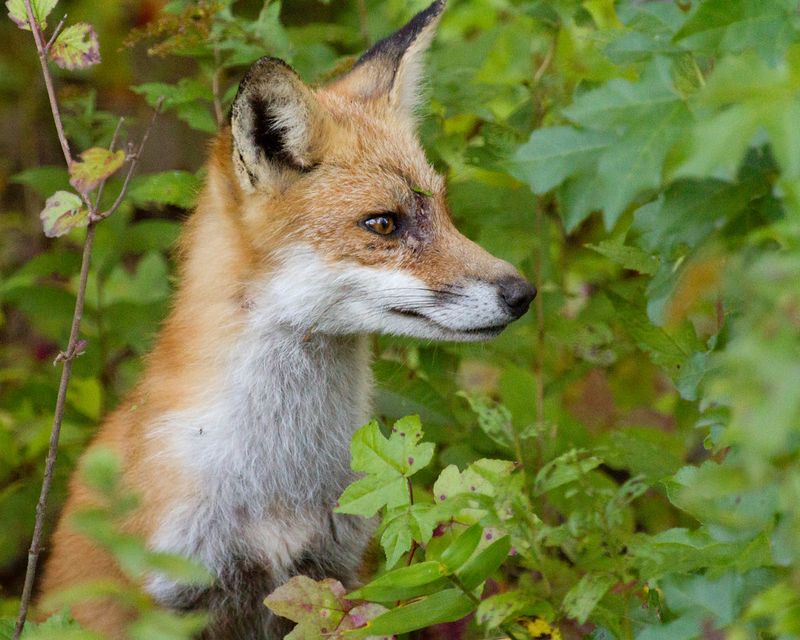
In Delaware, the cunning red fox is both admired and feared for its wily nature. These adaptable animals thrive in various environments, from urban areas to rural landscapes.
Though not typically dangerous to humans, red foxes can become aggressive if provoked or cornered. They are known carriers of rabies, which poses a significant threat if untreated.
To safely enjoy Delaware’s wildlife, observe foxes from a distance. Secure trash and avoid leaving pet food outside to prevent attracting them into residential areas. This way, you can appreciate their beauty without risk.
Florida – Bull Shark
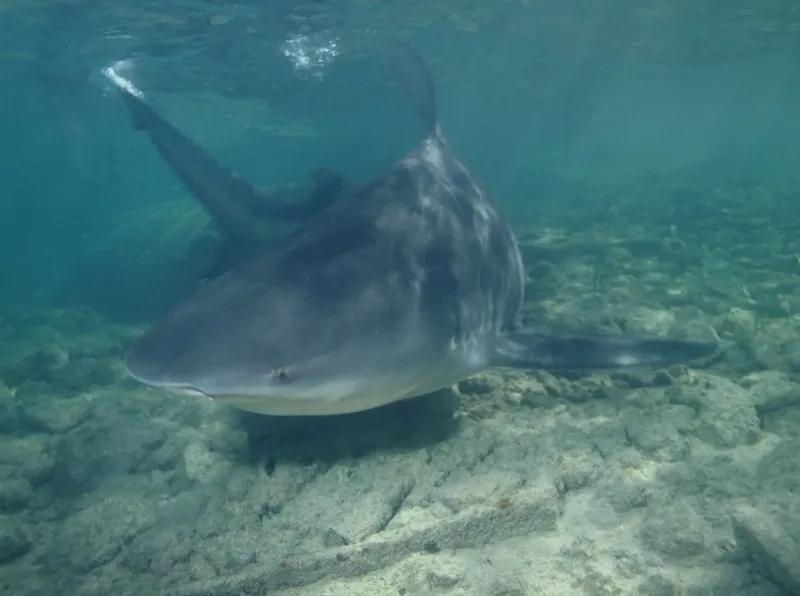
Florida’s warm coastal waters are home to the formidable bull shark, known for its aggressive nature. Unlike other sharks, bull sharks can thrive in both salt and freshwater, often venturing into rivers.
Their unpredictable behavior makes them one of the most dangerous sharks to humans. While attacks are rare, they can occur in shallow waters where people swim. It’s crucial to stay vigilant and avoid swimming during dawn and dusk when sharks feed.
In Florida, respecting the ocean and understanding shark behavior can help prevent negative encounters, allowing you to enjoy the state’s beautiful beaches safely.
Georgia – Eastern Diamondback Rattlesnake
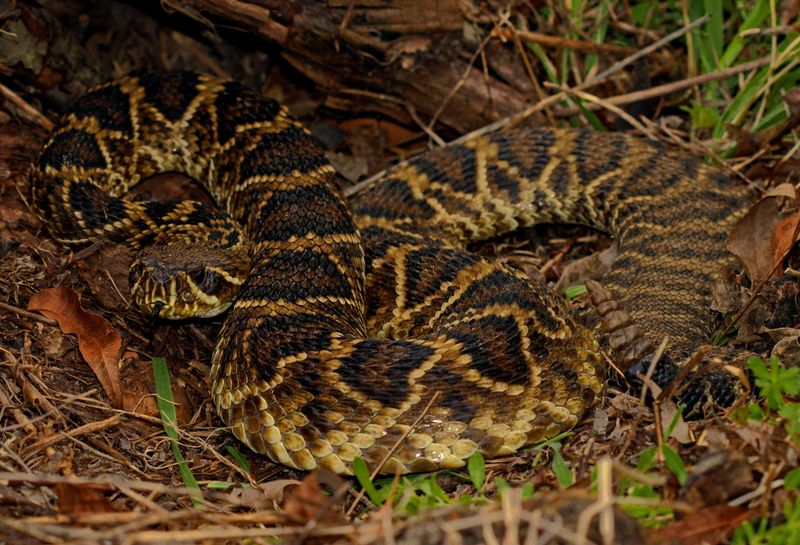
The eastern diamondback rattlesnake, native to Georgia, is the largest rattlesnake species in North America. Recognizable by its diamond pattern and large size, this snake is highly venomous.
Bites can be life-threatening if untreated, causing severe pain and swelling. The snake’s distinctive rattle warns of its presence, allowing potential threats to back away safely.
In Georgia, it’s crucial to be aware of these snakes when hiking or exploring natural areas. Avoid tall grass and wear protective clothing. Education and caution can help ensure safe interactions with these powerful reptiles.
Hawaii – Box Jellyfish
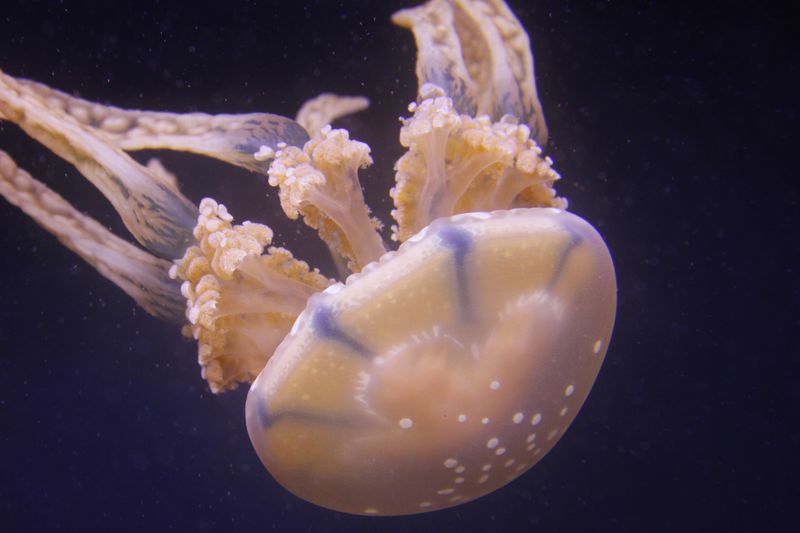
In Hawaii’s tropical waters, the box jellyfish poses a hidden danger. These creatures are nearly transparent, making them hard to spot as they drift with the ocean currents.
Their tentacles deliver a painful sting that can cause severe reactions in some individuals. Stings can lead to difficulty breathing and cardiac issues, requiring immediate medical attention.
When swimming in Hawaii, check local advisories for jellyfish warnings and avoid the water during peak months. Vinegar can help neutralize the sting, but seeking medical care is crucial for severe reactions. Stay informed and swim safely.
Idaho – Western Rattlesnake
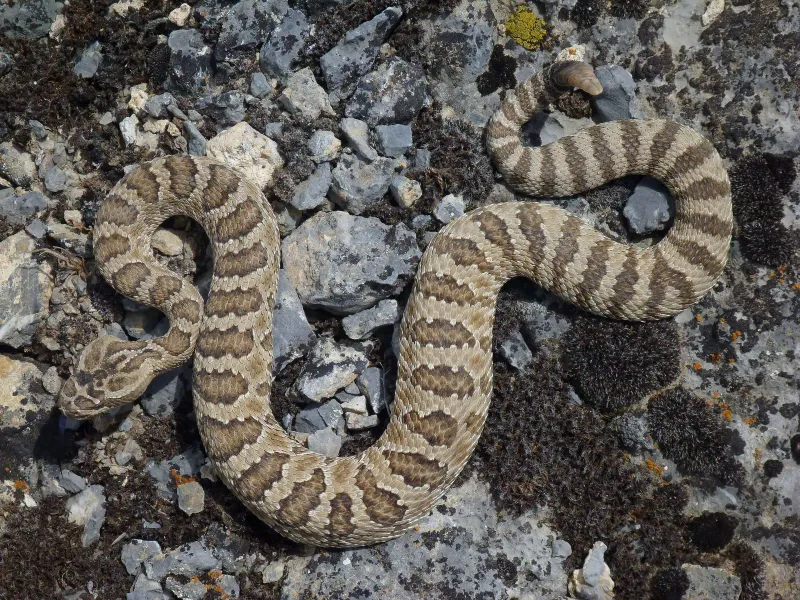
The western rattlesnake, found throughout Idaho, is a venomous snake that commands caution. These snakes are adapted to the state’s varied landscapes, from deserts to mountains.
Their venomous bite can cause significant pain and requires immediate medical attention. The snake’s rattle serves as a warning, allowing time to retreat and avoid confrontation.
When exploring Idaho’s natural beauty, be aware of your surroundings and wear sturdy boots. Understanding and respecting these creatures can help prevent negative encounters, allowing you to appreciate Idaho’s wildlife safely.
Illinois – Brown Recluse Spider
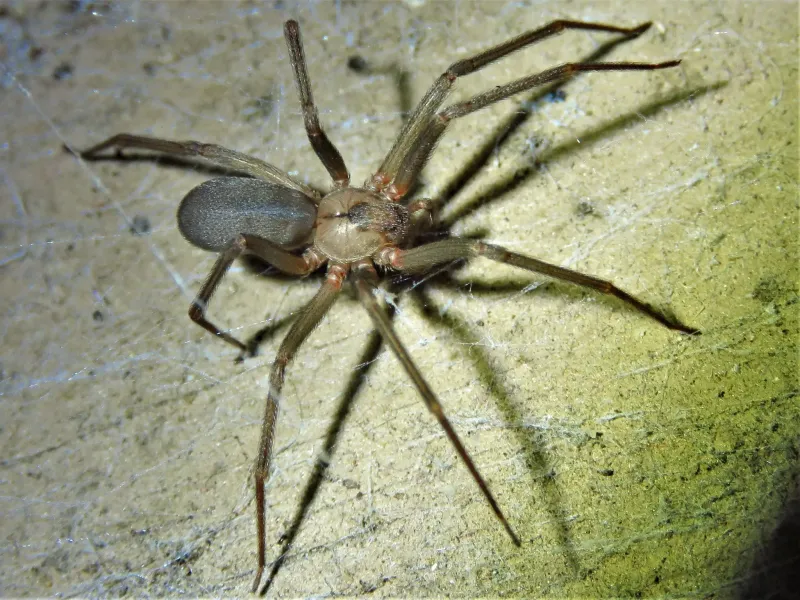
In Illinois, the brown recluse spider is infamous for its venomous bite. Preferring dark, secluded spaces, these spiders often go unnoticed until it’s too late.
Although not aggressive, their bite can cause severe skin necrosis and systemic symptoms. Medical evaluation is advised if bitten, especially for those with compromised immune systems.
To minimize the risk, regularly inspect and clean storage areas and garages. Using gloves when reaching into dark spaces can provide additional protection. Being proactive can help you coexist safely with these elusive spiders.
Indiana – Coyote
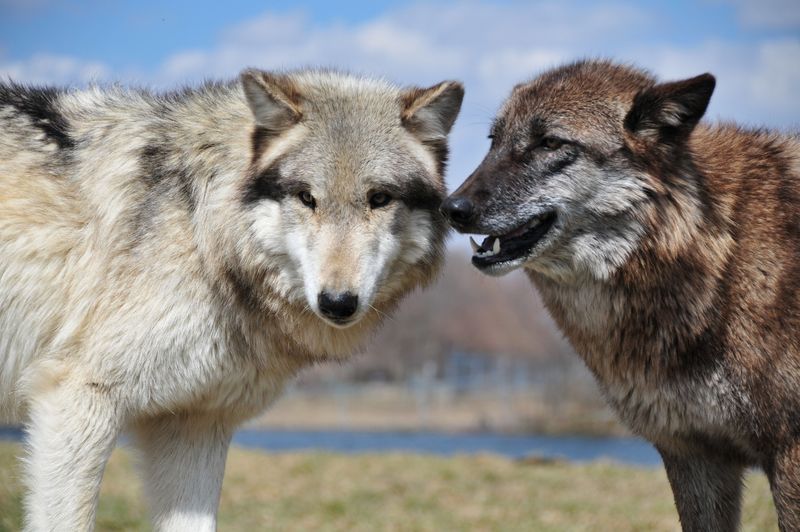
Coyotes in Indiana have adapted well to both rural and urban environments. Known for their intelligence and adaptability, they pose a threat to small pets and livestock.
While not typically dangerous to humans, they can become bold if fed or accustomed to human presence. Secure trash and avoid feeding wildlife to deter unwanted visits.
If encountering a coyote, make loud noises and appear larger to scare it away. Understanding and respecting their role in the ecosystem can help prevent conflicts and foster peaceful coexistence.
Iowa – Timberwolf
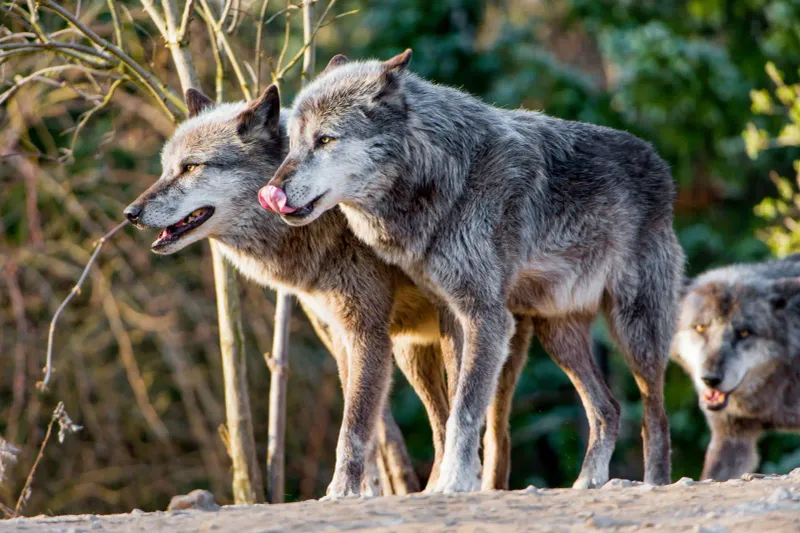
In the wilderness of Iowa, the timberwolf roams as a symbol of both fear and admiration. These intelligent predators play a crucial role in maintaining the balance of the ecosystem.
While generally avoiding humans, wolves can pose a threat to livestock and smaller pets. It’s essential to secure animals and livestock to prevent conflicts.
Appreciating the timberwolf means respecting their territory and understanding their behavior. They are an integral part of the natural landscape, and fostering coexistence through knowledge can enhance our connection with Iowa’s wild spaces.
Kansas – Prairie Rattlesnake
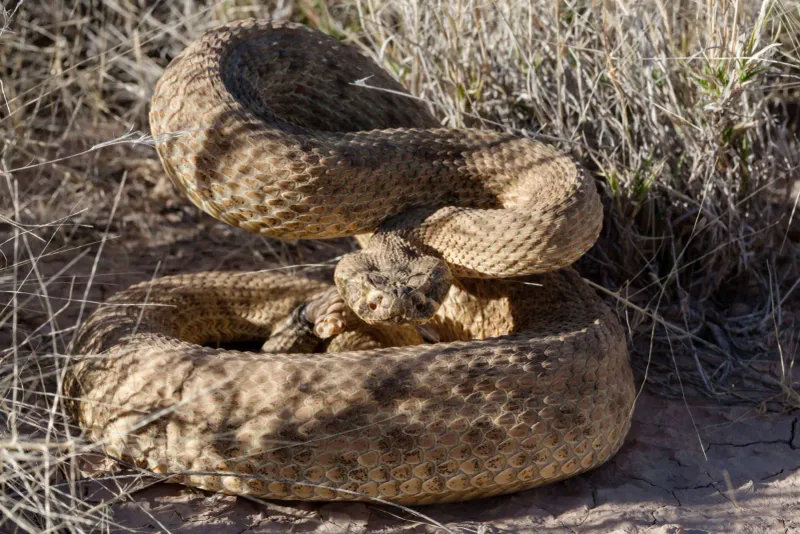
The prairie rattlesnake, found in Kansas, is a venomous snake adapted to the open grasslands. Known for its distinctive rattle, this snake serves as a warning to intruders.
Although bites are rare, they can be serious, requiring prompt medical attention. Prairie rattlesnakes play a vital role in controlling rodent populations, contributing to the ecosystem’s balance.
While exploring Kansas’ expansive prairies, stay on marked trails and wear protective footwear. Awareness and respect for these snakes can prevent negative encounters, ensuring a safe experience in the state’s natural beauty.
Kentucky – Copperhead Snake
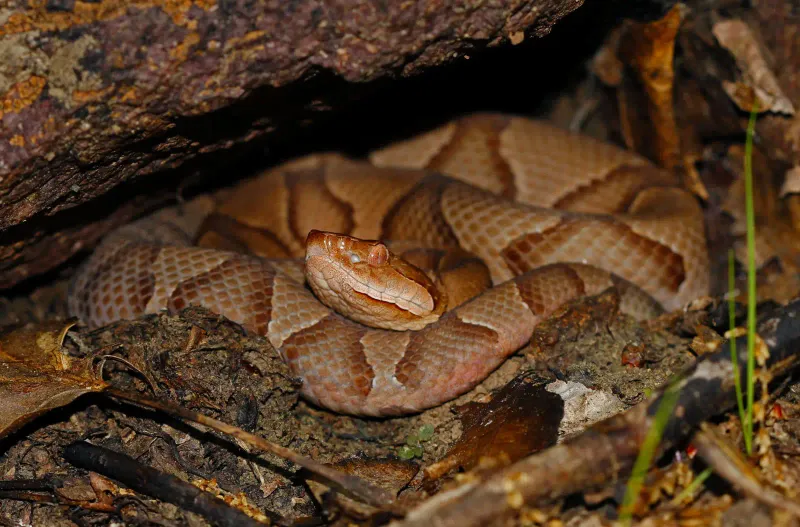
The copperhead snake, with its distinctive copper-colored scales, is a common sight in Kentucky’s forests. While venomous, their bites are rarely fatal but can cause significant pain and discomfort.
These snakes rely on camouflage to avoid detection, often resulting in accidental encounters. If bitten, seek medical attention promptly to manage symptoms effectively.
When hiking or exploring in Kentucky, stay on trails and watch your step to minimize risk. Educating yourself about their behavior can help ensure safe interactions with these secretive reptiles.
Louisiana – Saltwater Crocodile
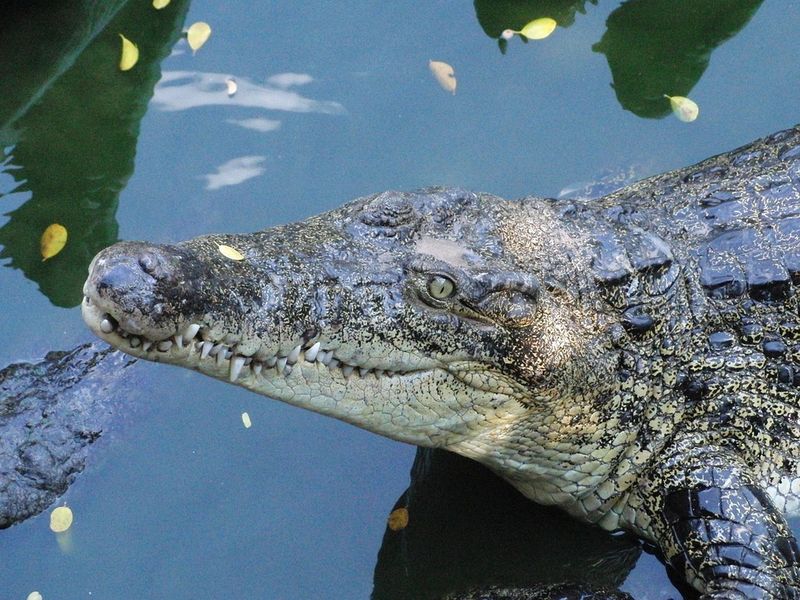
In the swamps and bayous of Louisiana, the saltwater crocodile is a dominant predator. These massive reptiles can reach lengths of over twenty feet and are known for their powerful jaws.
While attacks on humans are rare, they can be fatal if a crocodile feels threatened. It’s crucial to keep a safe distance and never feed or provoke them.
If exploring Louisiana’s waterways, respect these ancient creatures and their habitat. They play a crucial role in maintaining the ecological balance, and awareness can ensure safe coexistence.
Maine – Moose

In the forests of Maine, the moose is a magnificent but potentially dangerous animal. Known for their size and power, a startled moose can become aggressive, particularly during the mating season.
While generally avoiding humans, moose can charge if they feel threatened. It’s important to observe from a distance and never approach a moose, especially if calves are present.
When driving through wooded areas, be cautious of moose crossing roads. Awareness and respect can help prevent accidents and ensure safe enjoyment of Maine’s natural beauty.
Maryland – Striped Skunk
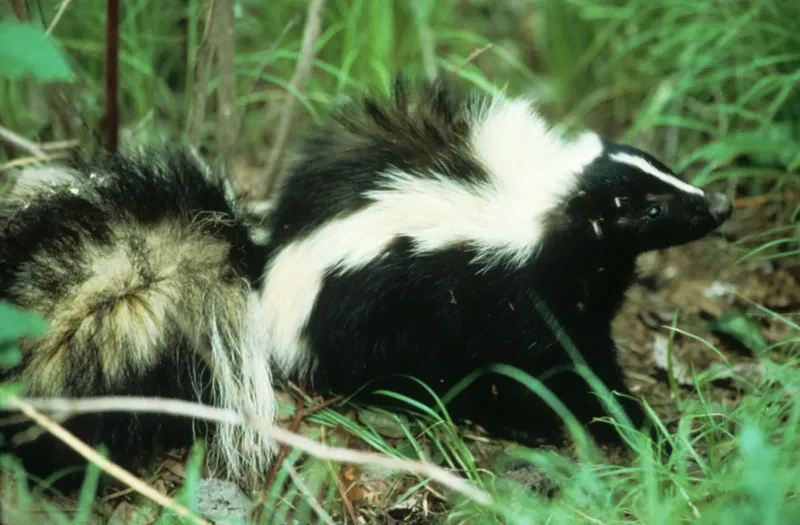
In Maryland, the striped skunk is more of a nuisance than a threat, known for its defensive spray rather than aggression. Encountering one can lead to a very unpleasant experience if it feels cornered.
These nocturnal creatures are omnivorous, feeding on insects and small animals. While not dangerous, their spray can cause temporary blindness and severe irritation.
To avoid skunk encounters, secure trash and remove food sources from yards. If threatened, back away slowly and give them space to retreat. Respect their territory to coexist peacefully with these unique mammals.
Massachusetts – Great White Shark

The great white shark, a formidable predator, roams the waters off Massachusetts. Known for their size and power, these sharks are at the top of the oceanic food chain.
While attacks are rare, they can be fatal. It’s essential to heed warnings and avoid swimming in areas where sharks have been sighted. Understanding shark behavior helps minimize risks.
In Massachusetts, respecting the ocean’s inhabitants and staying informed about shark activity can help ensure safe and enjoyable beach outings. Appreciate these majestic creatures from a safe distance to protect both humans and sharks.
Michigan – Black Bear

In Michigan’s woodlands, the black bear is a powerful symbol of the wild. While generally shy and avoiding humans, they can become aggressive if surprised or if their cubs are threatened.
Black bears are omnivorous, eating everything from berries to small mammals. When camping, secure food and trash to avoid attracting them into campsites.
If you encounter a bear, make yourself appear larger, make noise, and slowly back away. Understanding their behavior and respecting their space can prevent conflicts, allowing you to enjoy Michigan’s natural beauty safely.
Minnesota – Timber Rattlesnake
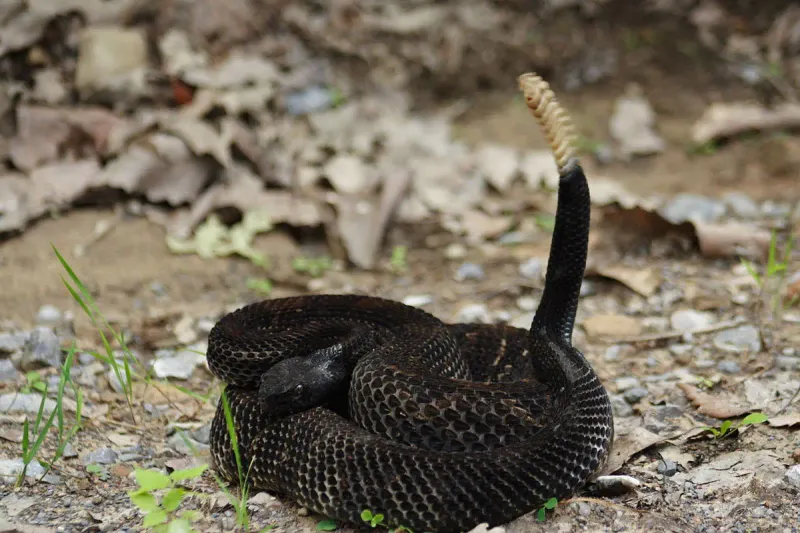
The timber rattlesnake, found in Minnesota, is a venomous species essential to the ecological balance. Preferring rocky habitats and woodlands, these snakes are crucial in controlling rodent populations.
Bites are rare but can cause severe pain and require prompt medical attention. The rattlesnake’s warning rattle provides time to back away safely, preventing bites.
While exploring Minnesota’s natural areas, remain vigilant and respect these snakes’ space. Staying on trails and wearing proper footwear can help ensure a safe and enjoyable experience in the wild.
Mississippi – Wild Boar

In the wilds of Mississippi, the wild boar is a formidable creature. Known for their strength and aggression, they can cause significant damage to crops and landscapes.
Wild boars are omnivorous and can become aggressive if cornered or threatened. It’s important to avoid provoking them and to secure property to deter their presence.
While dangerous, they are also a part of the ecosystem. Understanding their behavior and maintaining a safe distance can prevent conflicts, allowing for coexistence with Mississippi’s diverse wildlife.
Missouri – Eastern Copperhead
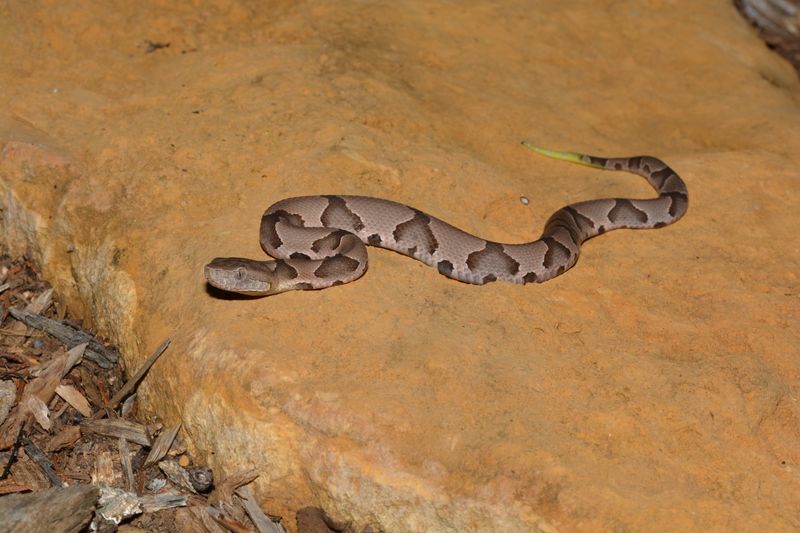
The eastern copperhead snake, residing in Missouri, is a venomous species recognized by its copper-colored scales. While not aggressive, their bites can cause significant pain and require medical attention.
These snakes rely on camouflage to remain hidden, often resulting in accidental encounters. If bitten, it’s vital to seek prompt medical care.
When exploring Missouri’s forests, stay on designated trails and watch your step to avoid encounters. Educating yourself about their habits can ensure safe interactions and appreciation of Missouri’s natural beauty.
Montana – Grizzly Bear
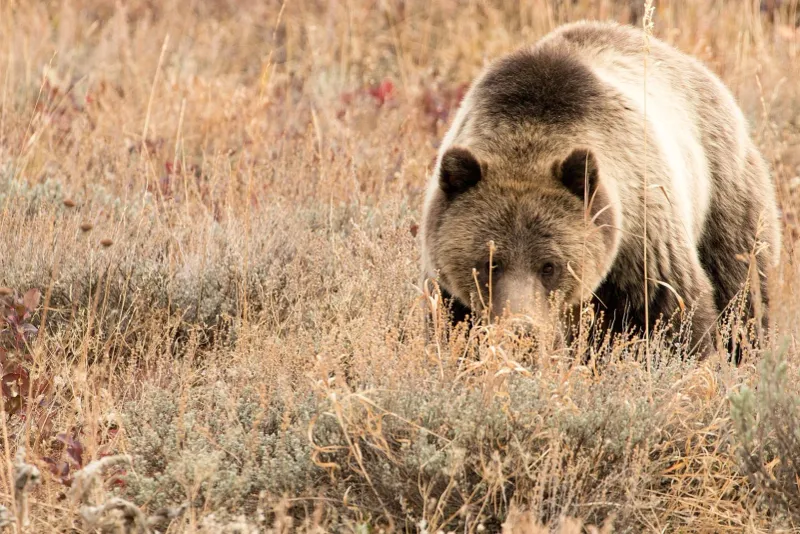
Montana’s vast wilderness is home to the majestic grizzly bear, a symbol of the untamed wild. These powerful animals are awe-inspiring yet demand respect and caution.
While generally avoiding humans, a startled or provoked bear can be dangerous. It’s crucial to make noise while hiking, carry bear spray, and stay in groups.
Observing grizzlies from a distance ensures both safety and the preservation of their natural habits. Understanding their behavior is key to coexisting in Montana’s breathtaking landscapes.
Nebraska – Western Diamondback Rattlesnake
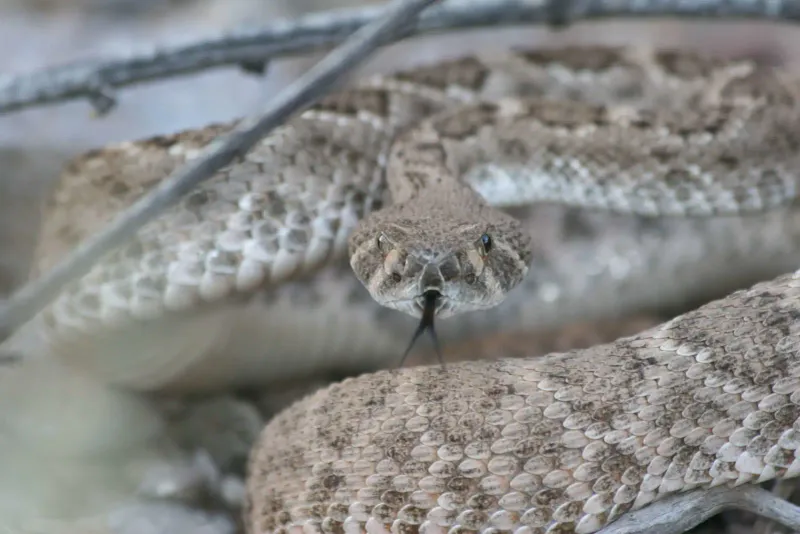
In Nebraska’s diverse landscapes, the western diamondback rattlesnake is a venomous species that commands attention. Known for its distinctive diamond pattern, this snake serves an important ecological role by controlling rodent populations.
Though bites are rare, they can be painful and require immediate medical attention. The rattlesnake’s warning rattle allows potential threats to retreat safely.
While exploring Nebraska’s natural areas, stay aware of your surroundings and respect these snakes’ habitat. Education and vigilance can prevent negative encounters, allowing for safe enjoyment of the state’s wildlife.
Nevada – Tarantula

In Nevada’s arid deserts, the tarantula is a creature that can inspire both fear and fascination. These large, hairy spiders are harmless to humans but their appearance can be intimidating.
Tarantulas are slow movers and generally avoid confrontations, relying on their size to deter predators. Their bite is not dangerous, akin to a bee sting, causing minor irritation.
While exploring Nevada’s deserts, appreciate these arachnids from a distance. Respect their role in the ecosystem as insect controllers, helping maintain balance in the desert’s unique environment.
New Hampshire – Bobcat
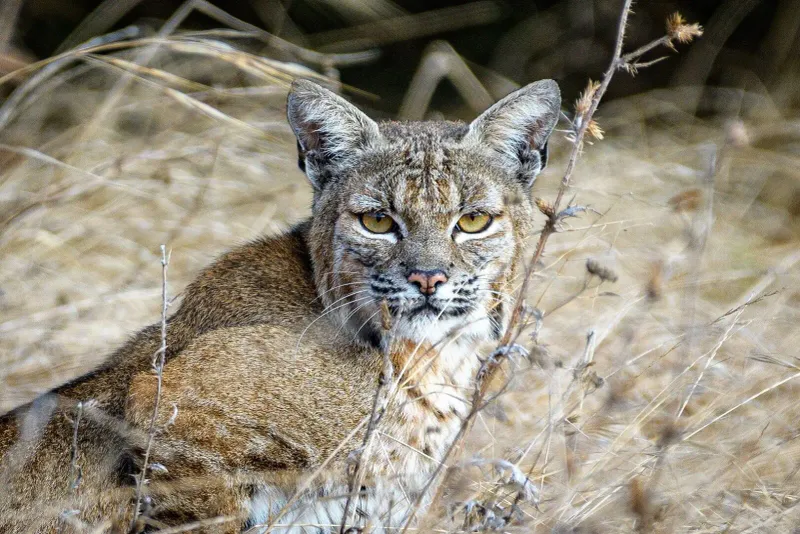
In New Hampshire’s forests, the bobcat is a stealthy predator. Known for its tufted ears and short tail, this wildcat is both elusive and fascinating.
Bobcats are solitary animals, hunting small mammals and birds. While generally avoiding humans, they can become bold if food is scarce or if they feel threatened.
Respecting their space and securing food sources can prevent conflicts. Understanding bobcat behavior helps ensure safe coexistence, allowing both humans and bobcats to thrive in the shared landscape of New Hampshire.
New Jersey – Northern Copperhead
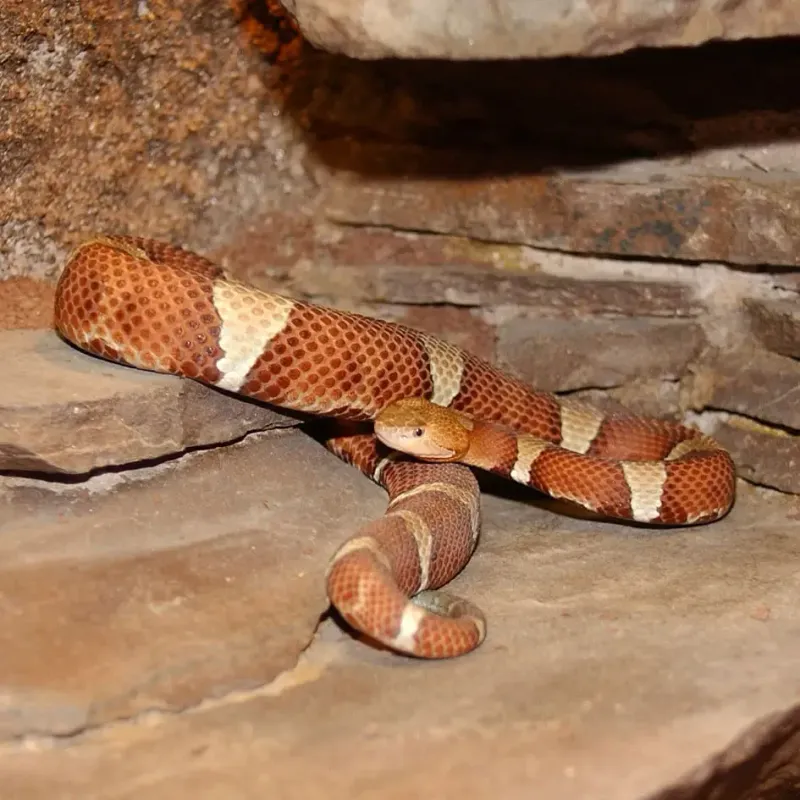
In the forests of New Jersey, the northern copperhead snake blends seamlessly with its surroundings. This venomous snake, identified by its coppery head, demands respect and caution.
Although bites are not typically fatal, they cause significant pain and require medical treatment. Copperheads rely on camouflage for protection, often resulting in accidental encounters.
While exploring New Jersey’s natural beauty, stay on trails and be vigilant. Understanding snake behavior and respecting their habitat can help prevent negative encounters, ensuring a safe and enjoyable outdoor experience.
New Mexico – Rattlesnake
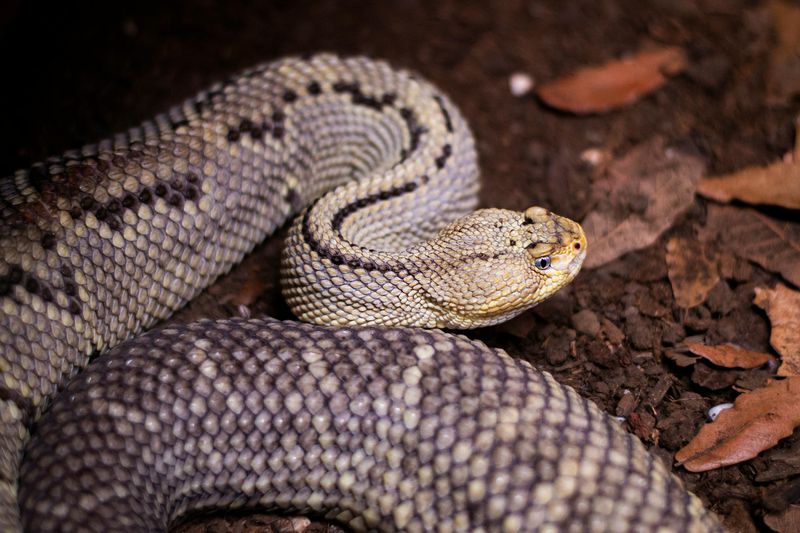
In New Mexico’s deserts, the rattlesnake is a creature that commands attention and respect. Known for its distinctive rattle, this venomous snake plays a vital role in controlling rodent populations.
Bites are rare but can be serious, requiring immediate medical attention. The rattlesnake’s warning allows time to back away and avoid confrontation.
When exploring New Mexico’s rugged landscapes, stay aware of your surroundings and respect these snakes’ space. Wearing proper footwear and remaining vigilant can help ensure a safe experience in the wild.
New York – Eastern Timber Rattlesnake
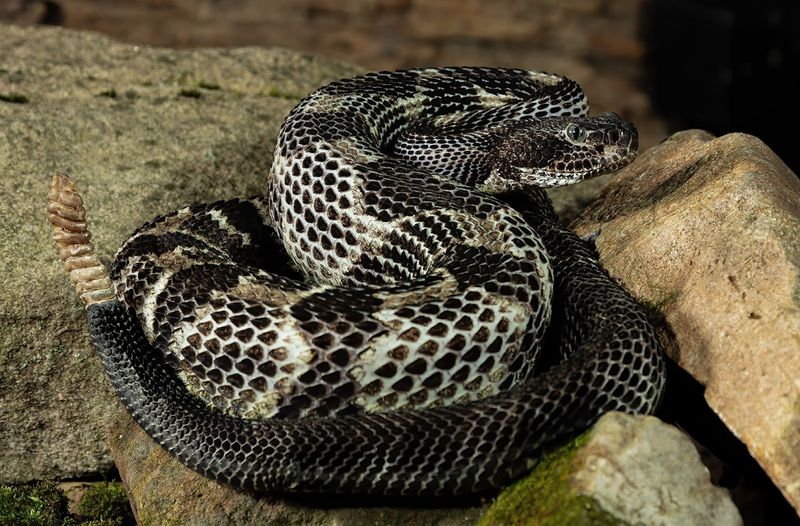
The eastern timber rattlesnake, found in New York, is a venomous species that plays an essential role in the ecosystem. These snakes prefer rocky outcrops and wooded areas, helping control rodent populations.
Bites can be serious, requiring medical attention, although they are rare. The snake’s rattle serves as a warning, giving time to retreat safely.
While exploring New York’s natural areas, stay on marked trails and be cautious. Understanding and respecting these snakes can prevent negative encounters, allowing for a safe and rewarding outdoor experience.
North Carolina – American Alligator

In North Carolina’s swamps and wetlands, the American alligator is a formidable presence. These massive reptiles, with their powerful bodies and jaws, are both awe-inspiring and intimidating.
While generally avoiding humans, alligators can become dangerous if provoked or if they feel threatened. It’s crucial to maintain a safe distance and never feed them.
When exploring North Carolina’s natural waterways, respect these ancient creatures and their habitat. Awareness and understanding can prevent negative encounters, ensuring a safe and enjoyable experience.
North Dakota – Bison
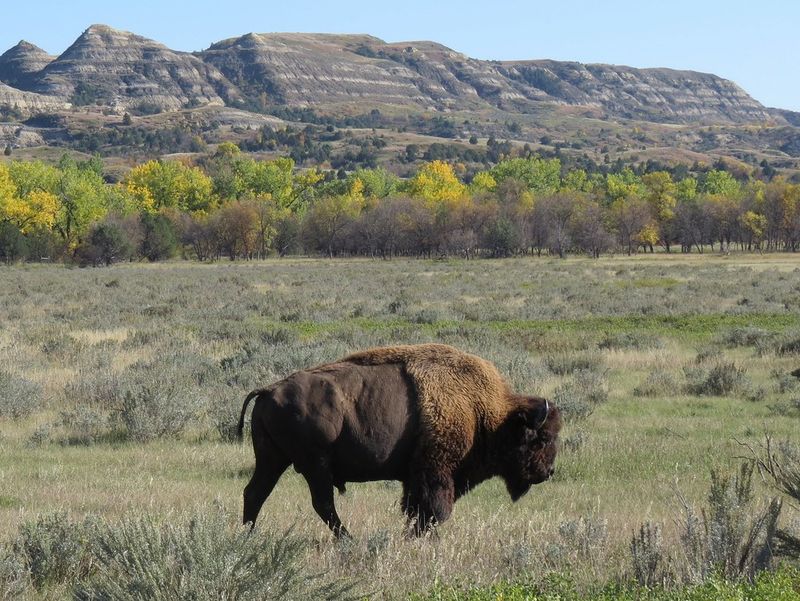
In North Dakota, the bison is an iconic symbol of the Great Plains. These massive animals, known for their strength and resilience, can become aggressive if provoked.
While generally calm, bison can charge if they feel threatened or if their space is invaded. It’s crucial to observe from a distance and never approach a bison, especially during calving season.
Appreciating these majestic creatures means respecting their territory and understanding their behavior. By keeping a safe distance, you can enjoy the beauty of North Dakota’s plains while ensuring your safety.
Ohio – Coyote

Coyotes have successfully adapted to Ohio’s varied environments, from rural areas to city outskirts. Known for their intelligence and adaptability, they pose potential threats to small pets and livestock.
Though not typically dangerous to humans, they can become bold if fed or accustomed to human presence. Secure trash and avoid feeding wildlife to deter coyotes from residential areas.
If you encounter a coyote, make noise and appear larger to scare it away. Respecting their role in the ecosystem and understanding their behavior can help prevent conflicts and foster peaceful coexistence.
Oklahoma – American Bison
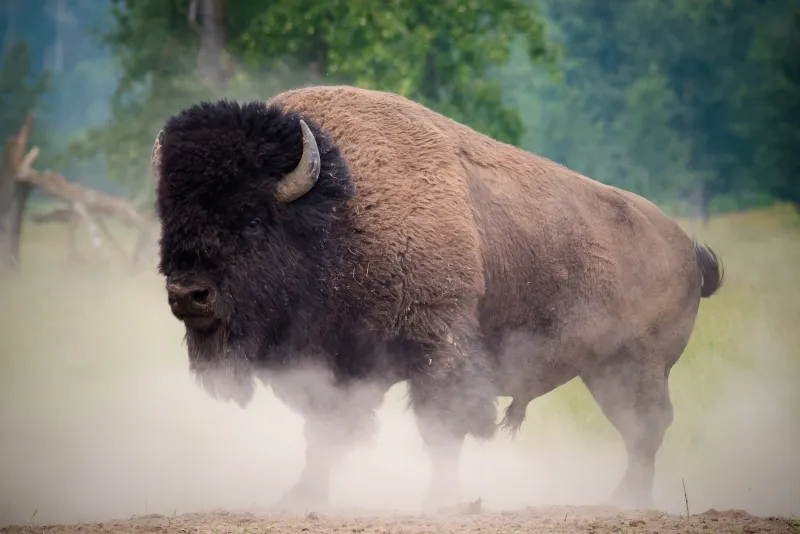
In Oklahoma, the American bison stands as a powerful symbol of the plains. These massive creatures are generally peaceful but can be dangerous if provoked or if they feel threatened.
Bison can charge at incredible speeds if their personal space is invaded. It’s important to observe from a distance and never approach, especially during mating season.
To appreciate Oklahoma’s bison safely, respect their habitat and understand their behavior. This ensures a harmonious coexistence, allowing you to enjoy the state’s landscapes while maintaining both your safety and theirs.
Oregon – Cougar

In Oregon’s diverse landscapes, the cougar is a top predator. These elusive cats are rarely seen but can pose a danger if encountered, particularly to small pets and livestock.
Cougars hunt using stealth and power, preferring deer and smaller animals. If you encounter one, make yourself appear larger, make noise, and avoid turning your back.
Understanding their behavior and respecting their territory can help ensure safe interactions. When exploring Oregon’s natural areas, stay vigilant and informed to coexist peacefully with these majestic predators.
Pennsylvania – Black Bear
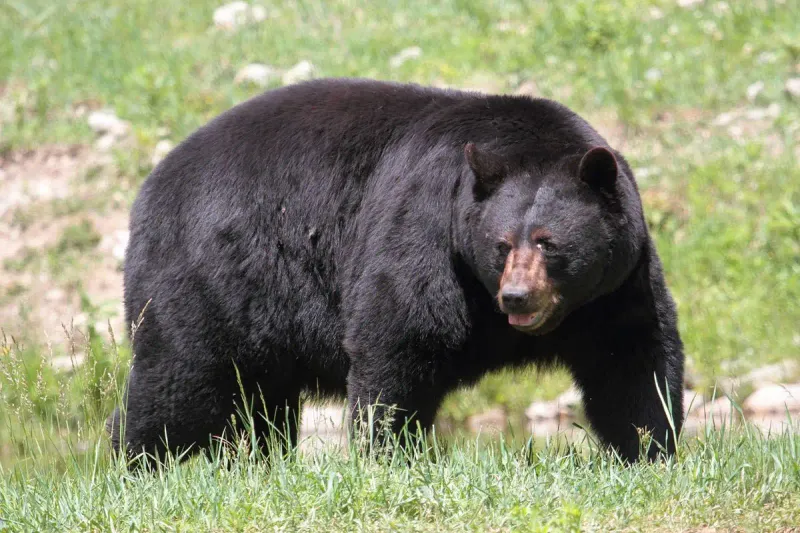
In Pennsylvania’s woodlands, the black bear is a symbol of wilderness. These powerful animals are generally shy, avoiding humans, but can become aggressive if threatened or if their cubs are endangered.
Black bears are omnivorous, eating everything from berries to small mammals. Secure food and trash when camping to avoid attracting them to campsites.
If you encounter a bear, make noise, appear larger, and slowly back away. Understanding their behavior and respecting their space can prevent conflicts, allowing you to enjoy Pennsylvania’s natural beauty safely.
Rhode Island – Coyote
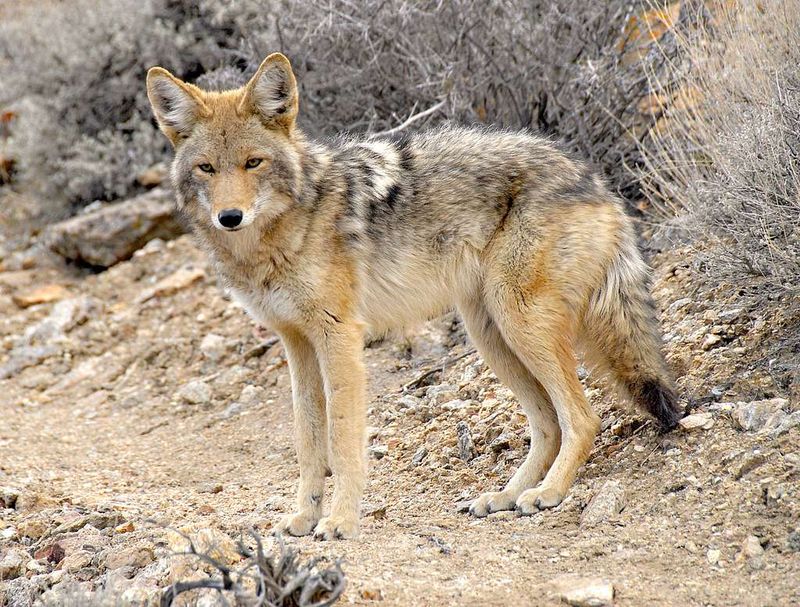
Coyotes in Rhode Island have adapted to both rural and suburban areas. Known for their intelligence and adaptability, they pose potential threats to small pets and livestock.
While they usually avoid humans, coyotes can become bold if food is readily available. Securing trash and avoiding feeding wildlife can deter unwanted visits.
If you encounter a coyote, make loud noises and appear larger to scare it away. Understanding their behavior and respecting their role in the ecosystem can help prevent conflicts, fostering peaceful coexistence.
South Carolina – Cottonmouth
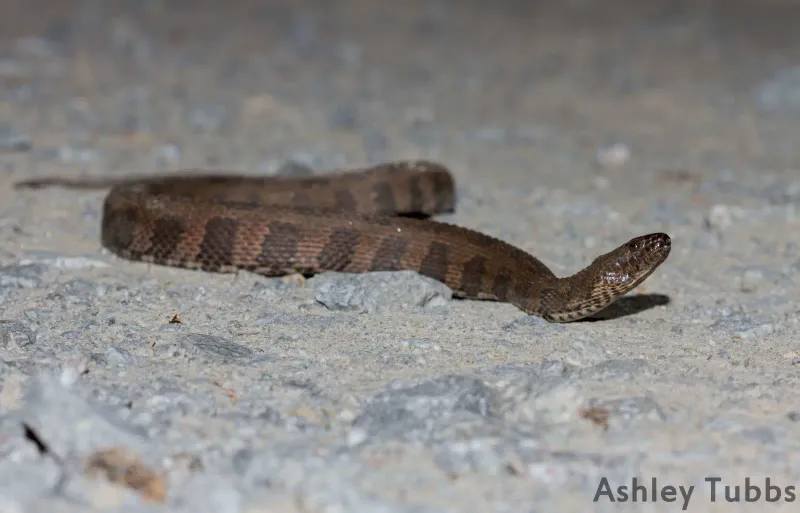
In South Carolina’s wetlands, the cottonmouth snake, or water moccasin, is a venomous creature that commands respect. Known for its defensive behavior, it is often found near water.
Cottonmouths are capable swimmers, using their white mouths to warn off threats. A bite can cause severe pain and requires medical attention.
When exploring South Carolina’s natural waterways, remain cautious and aware of your surroundings. Understanding snake behavior and respecting their habitat can ensure safe and enjoyable experiences in the wild.
South Dakota – American Bison
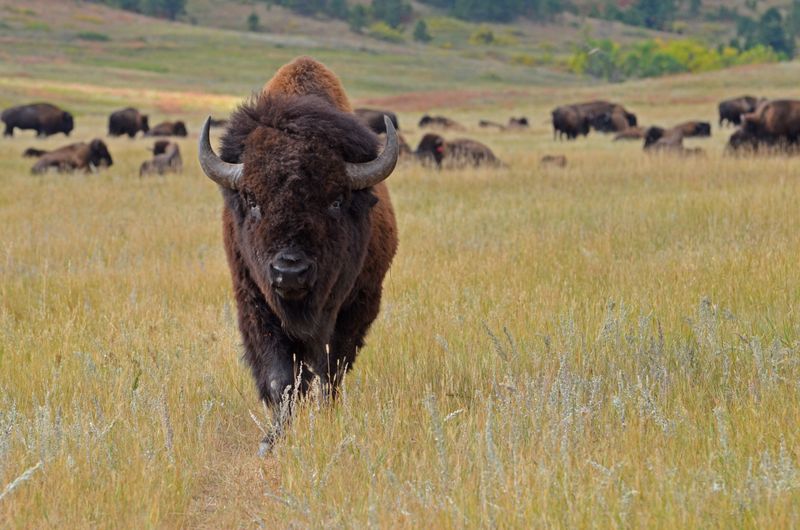
In South Dakota, the American bison is a symbol of the Great Plains’ vast landscapes. These massive creatures are generally peaceful but can be dangerous if provoked or if they feel threatened.
Bison can charge at incredible speeds, so it’s crucial to observe from a distance and never approach, especially during the calving season.
To appreciate South Dakota’s bison safely, respect their habitat and understand their behavior. This ensures a harmonious coexistence, allowing you to enjoy the state’s natural beauty while maintaining your safety.
Tennessee – Timber Rattlesnake

The timber rattlesnake, found in Tennessee, is a venomous species that demands respect and caution. These snakes prefer rocky terrains and are essential in controlling rodent populations.
Bites can be serious, requiring immediate medical attention, though they are rare. The rattlesnake’s warning rattle provides a chance to retreat safely, preventing bites.
While exploring Tennessee’s natural areas, stay vigilant and respect these snakes’ space. Wearing proper footwear and remaining on trails can help ensure a safe and enjoyable outdoor experience.
Texas – Coral Snake

In the vast state of Texas, the coral snake stands out with its vibrant colors and potent venom. Easily recognized by its red, yellow, and black bands, this snake is shy but highly venomous.
While bites are rare, they can be life-threatening, requiring immediate medical attention. Coral snakes prefer to avoid confrontation, often hiding in leaf litter or underbrush.
Understanding their behavior and identifying their distinctive markings can help ensure safe encounters. When exploring Texas’ diverse landscapes, stay informed and respect the wildlife to prevent accidental encounters.
Utah – Black Bear

In Utah’s forests and mountains, the black bear is a majestic yet potentially dangerous animal. Known for their curiosity and strength, they generally avoid humans but can become aggressive if threatened.
Black bears are omnivorous, eating a varied diet from berries to insects. When camping, secure food and trash to prevent attracting them to campsites.
If you encounter a bear, make noise, appear larger, and slowly back away. Understanding their behavior and respecting their space can prevent conflicts, allowing you to enjoy Utah’s wilderness safely.
Vermont – Moose
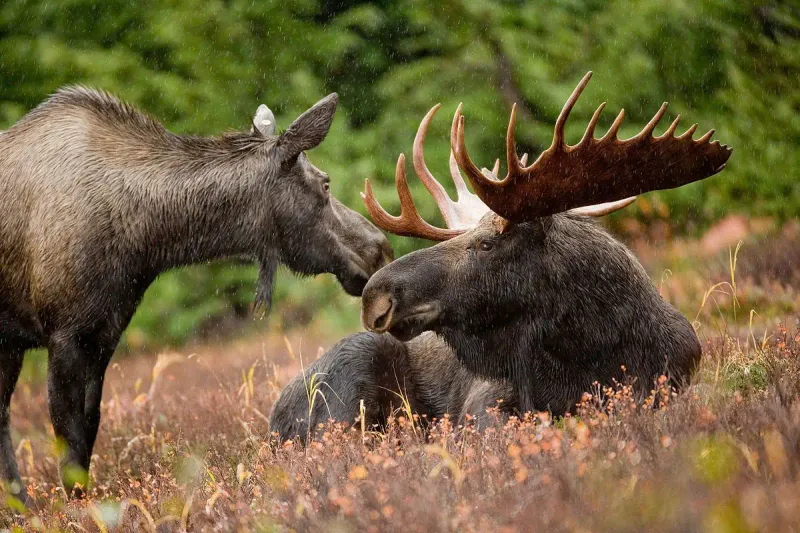
In Vermont, the moose is a majestic figure in the wild. These large animals are generally docile but can become aggressive if startled, particularly during mating season.
While they usually avoid humans, moose can charge if they feel threatened. Observing from a distance is crucial, especially if calves are present.
When driving in Vermont, be cautious of moose crossing roads, particularly at dusk and dawn. Respecting their habitat and understanding their behavior can ensure safe interactions, allowing you to appreciate Vermont’s natural beauty.
Virginia – Eastern Timber Rattlesnake
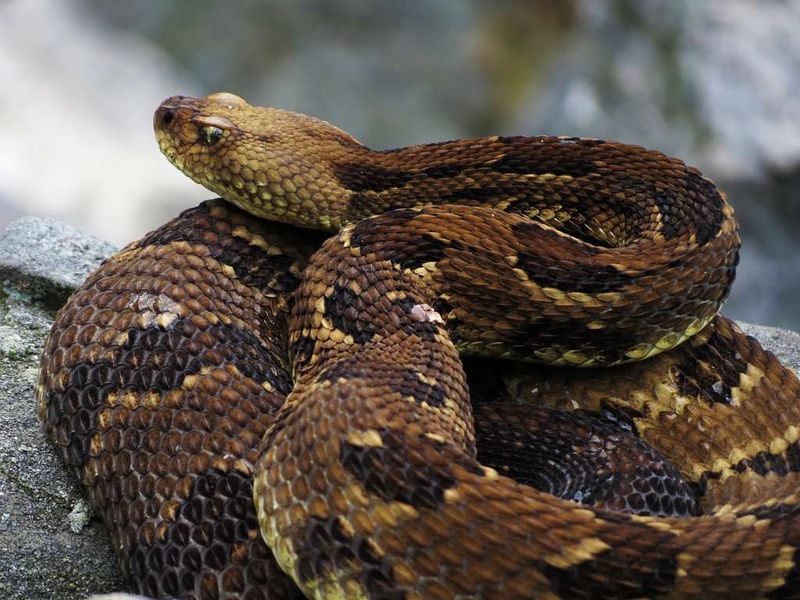
In Virginia, the eastern timber rattlesnake is a venomous species that commands respect. These snakes prefer rocky outcrops and forests, playing a vital role in controlling rodent populations.
Bites can be painful and require immediate medical attention, though they are rare. The rattlesnake’s rattle provides a warning, allowing time to back away safely.
While exploring Virginia’s natural areas, stay on trails and remain vigilant. Understanding and respecting these snakes can prevent negative encounters, ensuring a safe and enjoyable experience in the wild.
Washington – Cougar
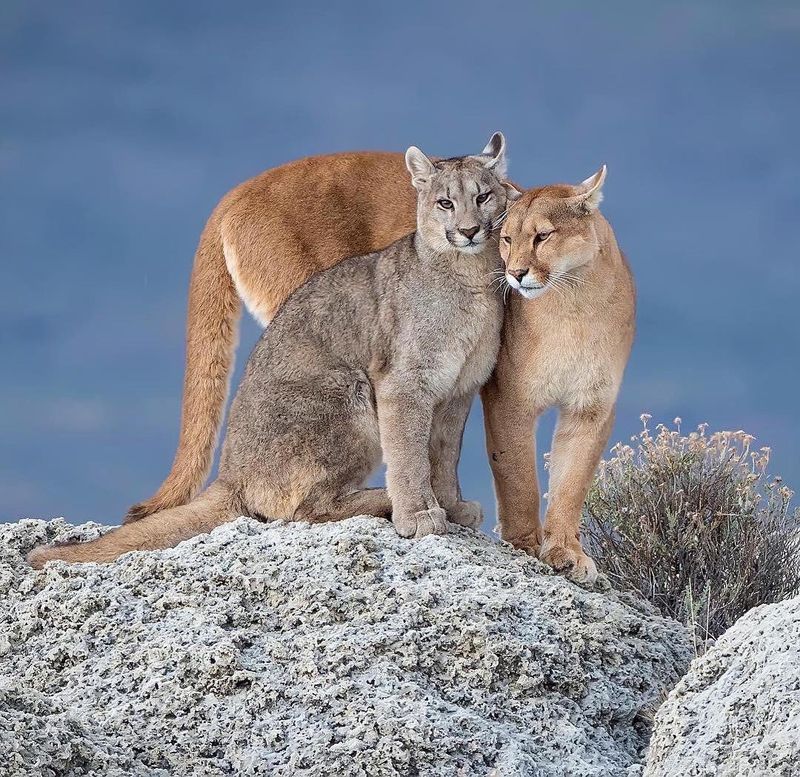
In the forests and mountains of Washington, the cougar is a powerful predator. These solitary cats are rarely seen but can be dangerous if encountered, particularly to small pets and livestock.
Cougars hunt with stealth and strength, preferring deer and smaller animals. If you encounter one, remain calm, make noise, and appear larger to deter an attack.
Understanding their behavior and respecting their territory is crucial for safe interactions. When exploring Washington’s natural areas, stay informed and vigilant to coexist peacefully with these majestic creatures.
West Virginia – Black Bear
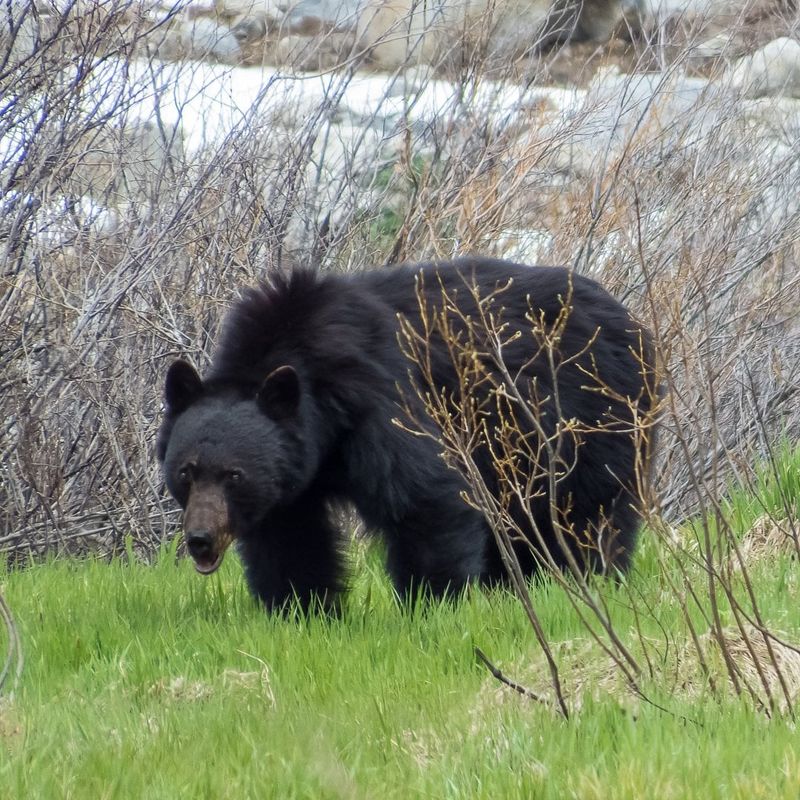
In West Virginia, the black bear is both a symbol of wilderness and a creature to be cautious of. These bears are generally shy, avoiding humans, but can become aggressive if threatened or if cubs are present.
Black bears are omnivorous, eating a diverse diet from berries to fish. Secure food and trash to prevent attracting them to campsites and residential areas.
If you encounter a bear, make noise, appear larger, and slowly back away. Understanding their behavior and respecting their space can prevent conflicts, allowing you to enjoy West Virginia’s natural beauty safely.
Wisconsin – Timberwolf

In Wisconsin, the timberwolf is both feared and revered as a symbol of the wild. These intelligent predators are crucial for maintaining the ecosystem’s balance by controlling deer populations.
While generally avoiding humans, wolves can pose a threat to livestock and small pets. It’s essential to secure animals and livestock to prevent conflicts.
Understanding timberwolf behavior and respecting their territory can help foster peaceful coexistence. Appreciating these creatures helps preserve Wisconsin’s natural heritage, allowing humans and wildlife to thrive together.
Wyoming – Grizzly Bear
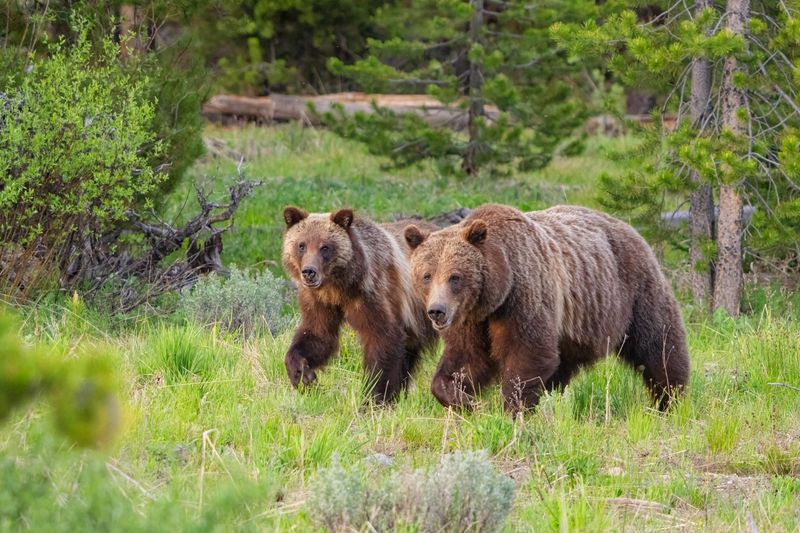
In Wyoming, the grizzly bear is a powerful symbol of the untamed wild. These majestic animals are awe-inspiring yet demand respect and caution.
While generally avoiding humans, a startled or provoked bear can be dangerous. It’s crucial to make noise while hiking, carry bear spray, and travel in groups.
Observing grizzlies from a distance ensures both safety and the preservation of their natural habits. Understanding their behavior is key to coexisting in Wyoming’s breathtaking landscapes.

